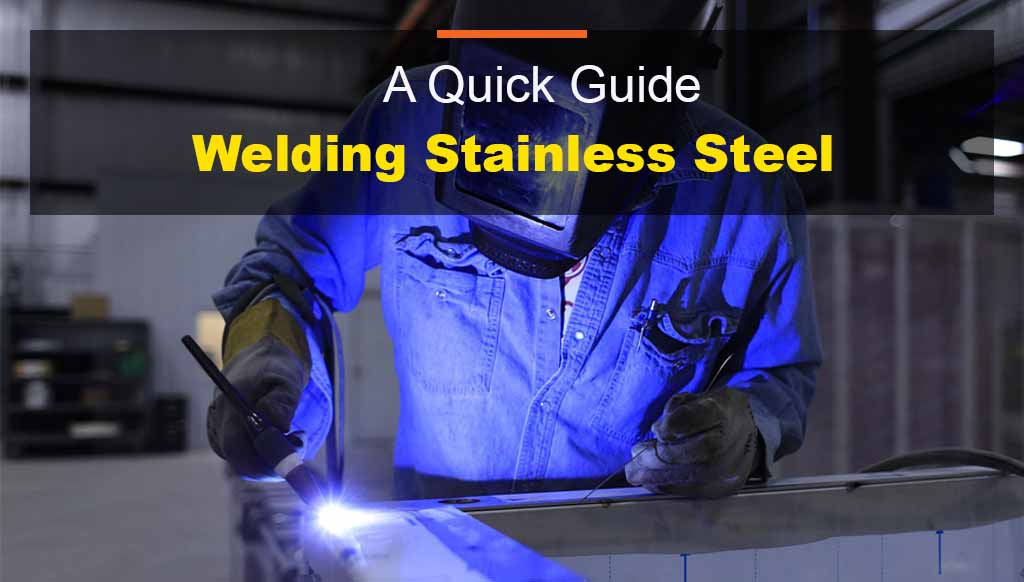
4 Best Ways for Stainless Steel Welding [A Quick Guide]
The non-rusting stainless steel is long heralded as a popular building material. This is a widely known preference for its durability, strength, workability, and varying degree of corrosion resistance. This attractive metal has an added challenge to the precise welding. It is imperative to discuss the world of welding stainless steel before you opt for a project with stainless steel. Let us examine the metal in detail and the best techniques of welding stainless steel.
What is called stainless steel?
Stainless steel is an alloy of iron with a variable amount of chromium from 11%-30%. Rust-proof, attractive character of the metal owes to the chromium. The variation in the portion of chromium elements differs in the chemical composition of stainless steel and its utility. It adds elements like nickel and molybdenum to enhance its formability and corrosion resistance.
Harry Brearley introduced the original stainless steel in 1913. It is growing its popularity because of its strength and its anti-corrosion properties against chemicals, gases, and liquids. People feel surprised to know that there are three types of stainless steel, ferritic, austenitic, and martensitic. The welding process is not much different for each of them.
This welding metal performs very well in different industrial applications. It can withstand extremes of temperature which makes it an accepted choice in piping, corrosive chemicals, and oil industries. It is also a popular choice for medical equipment, restaurants, craft breweries for its resistance to infections.
The nasty part of stainless steel is that it is 3-5 times more expensive to the mild steel. The welding of it is equally expensive and makes it a tricky choice.
Preparation for welding is the key
How to weld stainless steel, always remains a puzzle to solve. Cleaning and preparing the stainless steel is the key for proper welding. Because the metal has a strong affiliation to the carbon steel. Keep the toolset separate to clean the stainless steel before welding. Any tool with residual carbon may contaminate the stainless steel and leads your final product to rust. Brush, hammer, and clamp should be kept separate from this welding metal.
It is advisable to keep carbon steel and stainless steel work areas separate because suspended carbon particles may embed in stainless steel to rust afterward.
A very important preparation is a choice of filler material. Try to match the filler material with the base metal. Generally, it is easy but poses difficulty with dissimilar metals.
Common Methods for Stainless Steel Welding
The choice of welding processes for stainless steel welding depends on factors like thickness of metal, finished product, time to complete the project. The SS welding machine of the following 4 methods are used predominantly.
1. TIG Welding
This most frequently used process for its top quality, strength, versatility, and longevity. This is an ideal choice for thin metal where the final appearance of the metal is a consideration. The TIG welding temperature and shielding gas argon, helium, hydrogen, and nitrogen used to prevent oxidation.
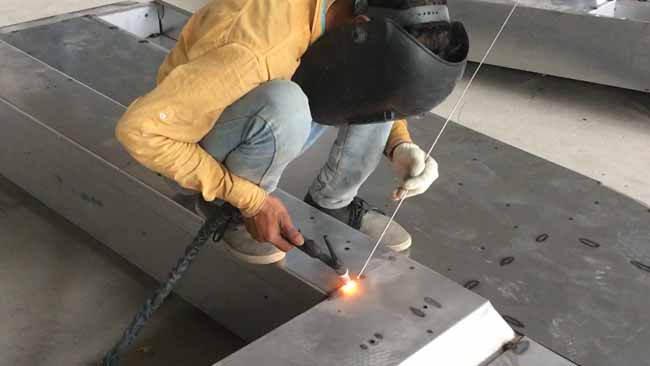
TIG welding is the most strong welding than other ways of welding. The welding where consumable is not used. The electric current itself creates an arc between tungsten and base metal. The arc in turn produces a high heat which can melt the surfaces to join.
The welding zone needs protection from the contaminants by shielding gases. The protected weld zone on cooling changes into the immaculate weld. No need for any grinding or chipping here posts welding.
Improvements in Stainless Steel TIG Welding
The TIG welding process in stainless steel comes as a horrific nightmare. An ugly weld is a demoralization unless you take the following tips to improve the results.
1. Use of Right Size Tungsten Rod – The weld quality is directly related to the diameter of the tungsten rod. Light metal sheet at low temperature with a big diameter of rod creates a struggle to start the smooth welding. The heavier the stainless steel, the bigger the size of the rods.
2. Clean the metal – No shortcut to the cleaning to make a clean, perfect, and a strong bead. The cleaning can be accomplished with a clean rag, acetone, other thinners are useful options to clean them. They clean the melt by removing everything fast.
3. The cleaning of the tip of tungsten – It is mandatory to get a precise, stable, and strong arc. The tip gets dirty by filler wire, which needs to keep clean for the next welding session. Finer the tip of tungsten the cleaner and the accurate is the arc.
4. Improve the Gas coverage – Impurities in the bead produce with entrapment of air. You are to use more gas to get better weld. A wide cup-like structure can be used for shielding gas to cover more areas and better welding results.
5. Enhance your welding speed – Choose the amperage where you weld does not blow away nor undercut while traveling fast. Better you run the welder at 10% less than an ampere per 0.001 inches of steel and move fast to match.
6. Selection of Right Filler Material – The filler material should nearly match the base metal. Never weld 304 stainless metal plates with 316 electrode rods. The filler material either be of equal and stronger in strength than the base metal to get a proper strong joint. Always choose the correct size of the rod to attain a better welding cover.
7. Back purging of the job – Keeping the backside of the weld shielded from the environment to maintain the quality of the weld. It can be achieved by purging kit or by covering the aluminum cover at the back of the weld.
8. Slower cooling – The slower the cooling the better is ss welding.
2. MIG Welding
The semi-automatic process to join two steel pieces with argon shielding gas and wire electrodes. Welding guns can reach a tough spot to weld in stainless steel projects.
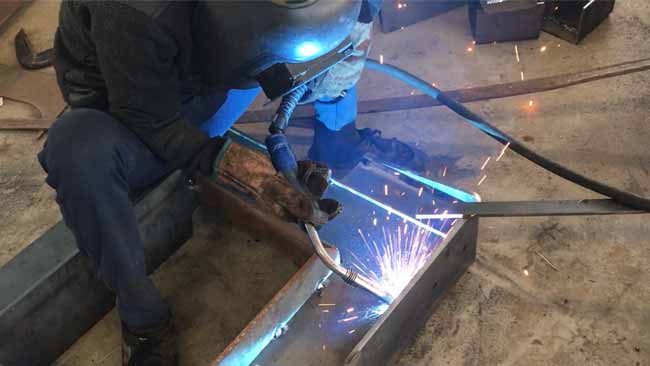
MIG a faster and reliable process of welding. The easiest process of welding for a novice welder, even. We opt for this process if the time to complete the job is small, and the user is not a trained certified welder.
The speed of welding is fast because of its electrode supply, which is semiautomatic with the wire feeder. The electrode is fed continuously at the preset speed to execute the job.
The shielding gas argon is used to protect the molten zone from atmospheric contaminants. The post-weld quality is quite good and clean and can be employed for a massive project.
3. Stick Welding
The DC source of stick welding is a better choice of welding stainless steel. The arc remains very smooth, stable with a peaceful start, and welding in different positions.
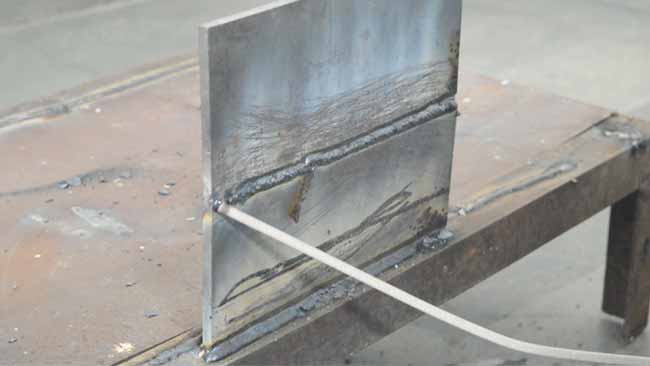
The basic welding for many decades. The most acceptable way of joining metals. It is possible to weld safely outdoors. There is a production of fumes that are generated from the flux of the electrodes. The flux helps to save the welding zone from contamination. This flux changes to slag post-weld which demands to chip off manually.
The welding by arc welding remains very strong and used mainly for structural welding. The welding aesthetics look is not exceptional but very firm.
4. Spot Welding
Versatile, a most economical welding process for small and large projects of ss welding. Here two metals join by heating locally and produce an elegant and durable weld with no distortion.
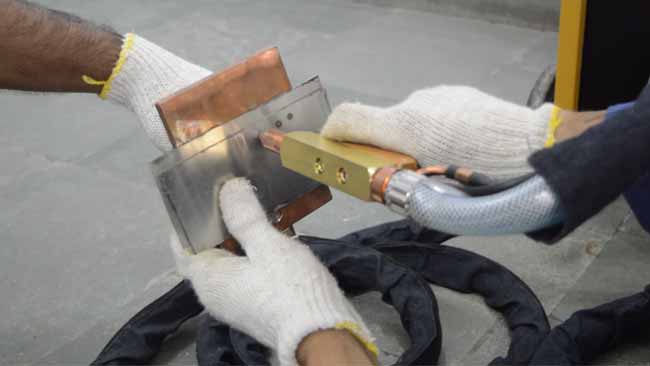
Most economical way of joining two sheets of metal. The electric current generates heat when it passes through the electrode. The resistance of the metal leads to heat production. The heat melts the metal surfaces which on the pressure of the arms on the electrode on cooling makes a strong joint.
Frequently Asked Questions
How difficult is stainless steel welding?
It is a bit challenging for a novice welder as the stainless steel holds the heat strongly. The enormous welding temperature can warp and even distort it during the cooling process. A very sensitive process as every blemish & scratch mark remains conspicuous and ruins the aesthetic looks. Stainless is not forgiving at the time of hiding the welder’s mistakes. The long experience in ss welding is the only qualification of the welder for steel welding.
Which type of welding process is best for stainless steel?
To find the answer to this question examine the welder’s skill, aesthetic looks of the final product, the thickness of metal, budget, and time to complete the project.
If you are looking for the most affordable process, then spot welding is the choice. The thin metal with clean aesthetic looks goes with tig welding. A big, fast, and strong project where looks are not paramount importance MIG welding process can be considered.
Is Tig welding possible for stainless steel?
Tig is a precise welding process, a choice for projects which demand clean, neat, controlled, less forgiving metals like stainless steel alloy. It is a slow process and demands an experienced welder to work on a stainless steel welding machine. Welding overcomes distortion in the base metal. Mig welding is a better choice where aesthetics looks not a preference. This is a fast, economical process, and a novice welder can complete the process with minimal cost. The equipment, accessories, and experience need to be few.
Can weld stainless steel rust?
Stainless steel normally withstands every type of corrosion. In extreme condition when the chromium oxide layer is broken then rusting is a possibility. This can happen during the welding, heating, or cooling process. There is a serious challenge of rusting in the tig welding stainless steel. We can win this with proper cleaning and preparation of the ss plate. The chromium oxide inside the stainless steel acts as a protective shield against the rust during the welding process. It helps the stainless to heal from permanent mark and discoloration.
What is the best way to weld stainless steel?
The steel is placed on the welding table and fixes with jigs and clamps. Now joins the two plates, if larger the pieces then Mig welding stainless steel is a choice. Tig welding is best for thin metal, delicate, and strong welding projects.
Is welding stainless steel different?
Stainless steel of Harry Brearley (1913) was much more corrosion resistance with very low ductility. The process of steel welding is not much different from carbon steel.
What is the best welding rod for stainless steel?
Stainless welding rod of A 309 or 312 is a better choice for stick welding stainless steel for repair and maintenance. The joint is strong and resistant to cracking on use.
Why are stainless welds black sometimes?
When the heated steel meets the atmosphere, oxidation occurs with atmospheric air. The color of the metal depends upon the composition of metal, temperature, and duration of the time it exposes the welding zone. The lesser amount of gases, too fast travel rate, and too much current may cause this discoloration.
Do you need any special wire to weld stainless steel?
You do not need any specific wire to change in the wire feed system as in the aluminum. The filler material should match the base metal for better steel welding results. The most common grade of austenitic stainless steel wire is 308. 309, and 316.
What types of stainless steel have the poorest weld quality?
The austenitic and ferritic grades are easy to weld with excellent quality results. The martensitic grade has a very hard, poor, and brittle welding quality because of the ratio of carbon content. The brittleness and hardening can be reduced by preheating of metal.
What is better AC or DC welding?
DC welding offers advantages over AC when welding steel because DC arcs are smooth, stable, few outages, peaceful start, easy overhead & vertical welding.
Final Words
Welding stainless steel is a dare worth taking. The process is loaded with a herd of benefits and limitations. Once you factor the limitations into the technique, the final result will be gratifying. Honing your welding skill with this trendy, popular, artistic, and valuable metal will save your energy and money on your project. The perfection in welding stainless steel will make you a professional whose skill will make you most wanted and marketable in the industries.
You Might Also Enjoy…
Cast Iron Welding Procedure [Step-By-Step Guide]
Understanding Aluminum Welding Process Compared with Steel Welding
MIG and TIG welding – Comparison between two welding processes
